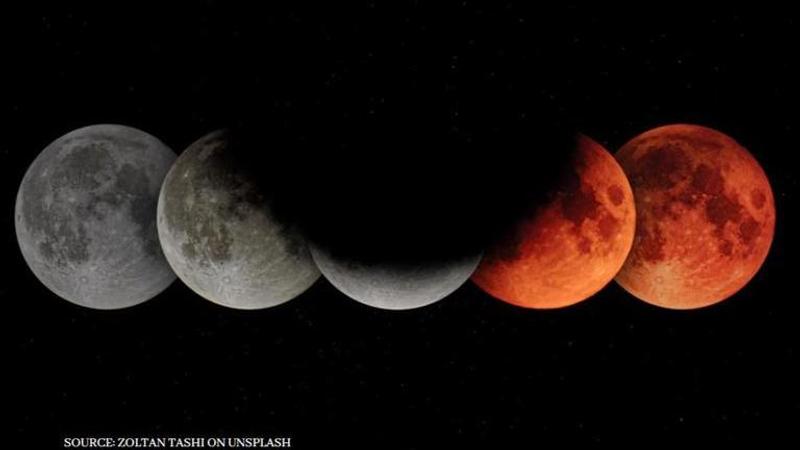Published 16:43 IST, June 5th 2020
What is a lunar eclipse? Everything to know about the Sun-Earth-Moon alignment phenomenon
What is lunar eclipse? Has been one of the most searched questions as a penumbral lunar eclipse will be taking place soon. Read details on the alignment inside.

The second penumbral lunar eclipse of 2020 will be taking place on Friday June 5, 2020. The eclipse will reportedly start at 11:15 PM and end at 2:34 AM IST. The total length of this lunar eclipse is going to be about three hours and eighteen minutes, as per astrologer reports. The lunar eclipse will be visible to people living in most parts of Asia, Australia, Europe, Africa, South America, Pacific, Indian Ocean and Antarctica.
As the second penumbral lunar eclipse has excited sky-gazing enthusiasts around the world, many also want to know about the precise nature of this cosmic phenomenon. Though it is not a complex alignment to understand, it does require some general explanation to understand what goes down during a lunar eclipse, especially when compared to the much more directly understood solar eclipse. Read below to know what a lunar eclipse is.
What is a lunar eclipse?
The lunar eclipse can only occur when there is a full moon. A total lunar eclipse takes place when the sun, Earth and the moon are perfectly aligned. Anything less than a perfect alignment results in a partial lunar eclipse and can even lead to having no eclipse at all. As the moon's orbit around the Earth follows a slightly different plane as compared to Earth's orbit around the sun, the perfect alignment for an eclipse does not always happen.
Image courtesy - Brian McMahon on Unsplash
A lunar eclipse develops over time and usually takes a couple of hours before aligning completely. This is how an event of lunar eclipse works - planet Earth casts two shadows on the moon during the lunar eclipse. The umbra snd penumbra shadows. While the umbra shadow is full and dark, the penumbra is the outer and partial shadow.
Almost two to four solar eclipses take place during a year but the frequency of lunar eclipses is far less. In any one calendar year, the maximum number of solar eclipses that have been reported is generally no more than four whereas lunar eclipses have only occurred a maximum of thrice in comparison. While solar eclipses are only properly visible along a 50-mile wide path, lunar eclipses can be witnessed more widely, spanning across half the Earth at a time. There are different types of lunar eclipses also, like the partial lunar eclipse and the penumbral lunar eclipse.
Updated 16:43 IST, June 5th 2020




